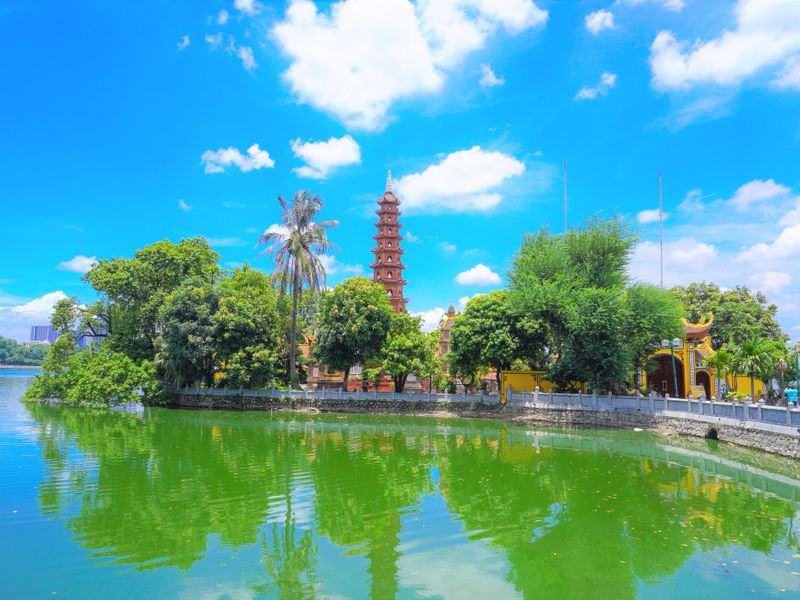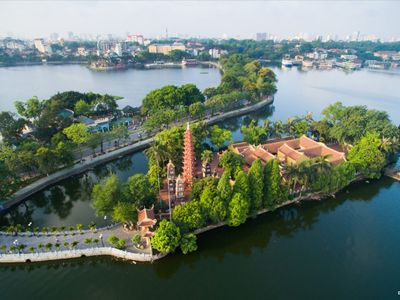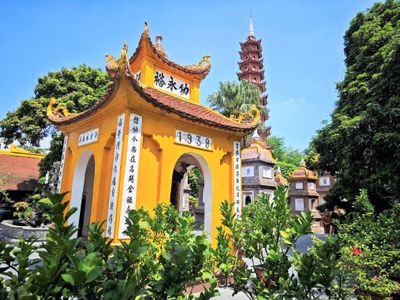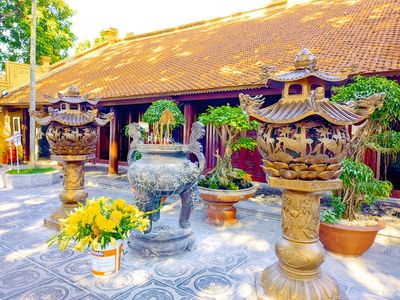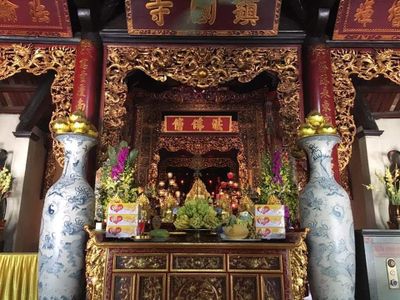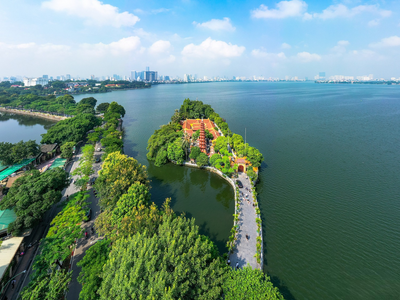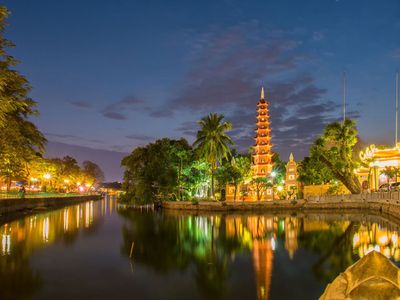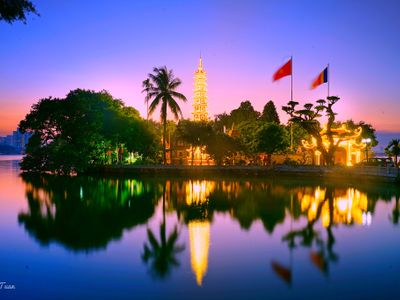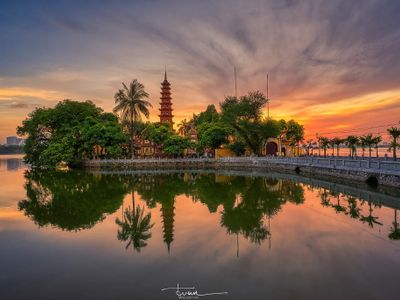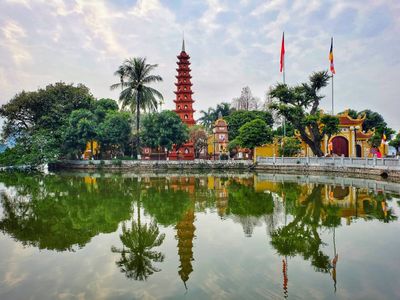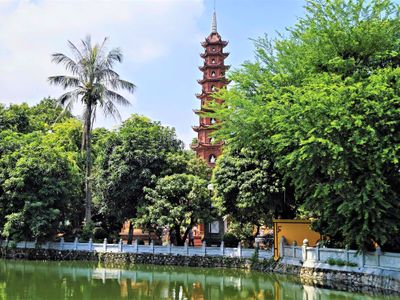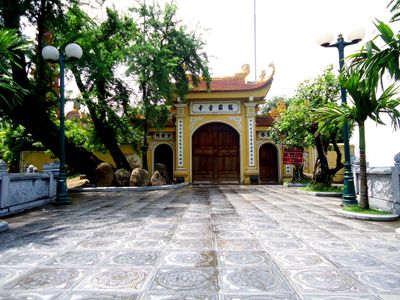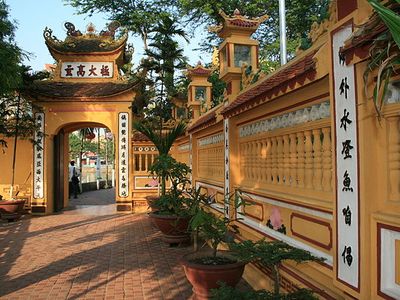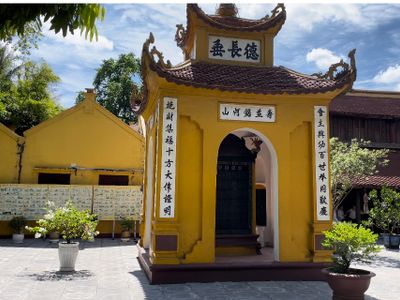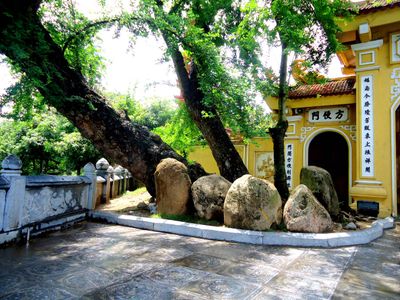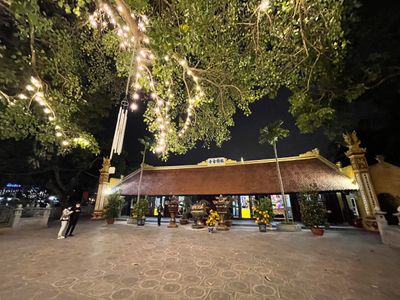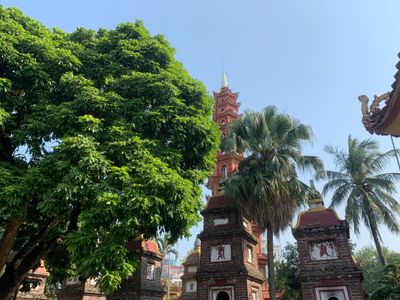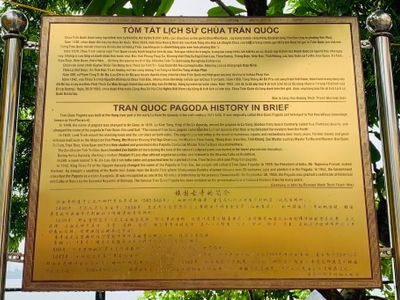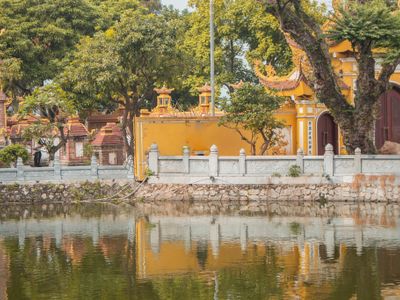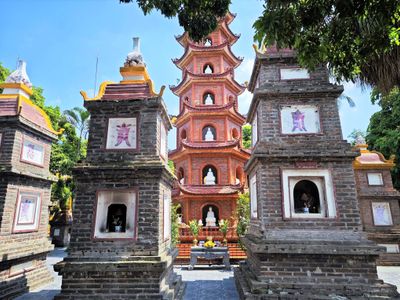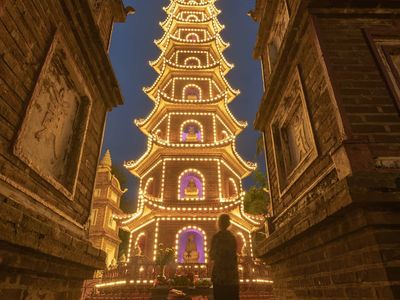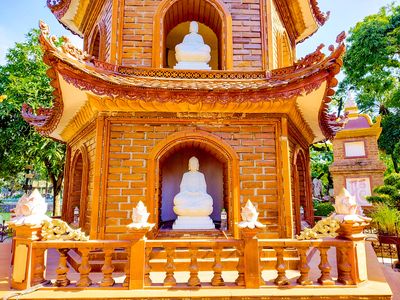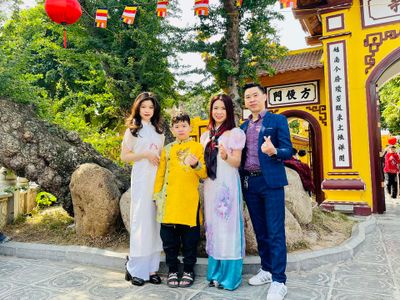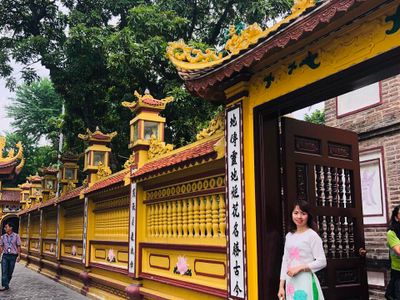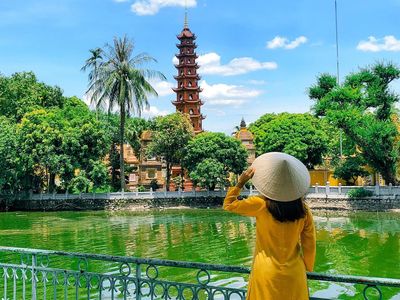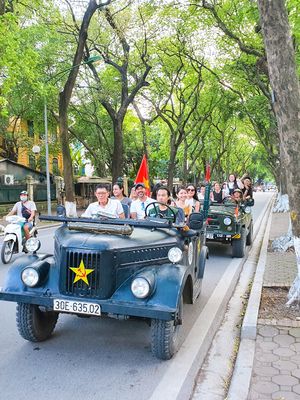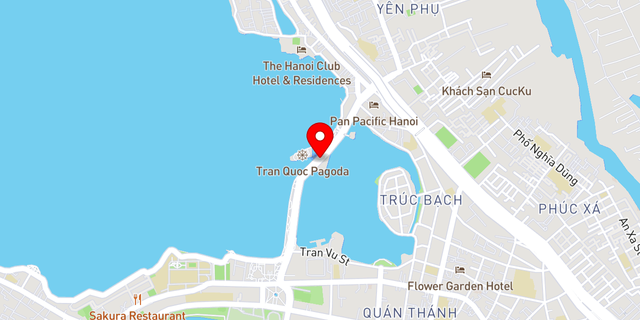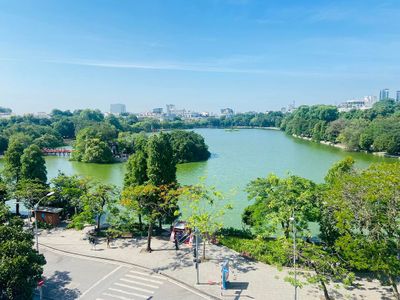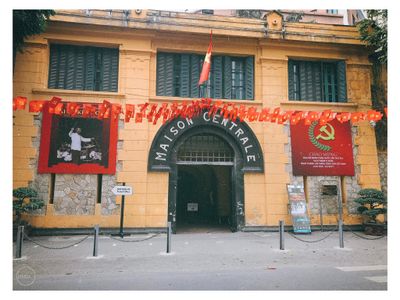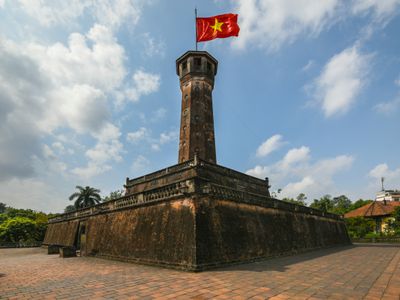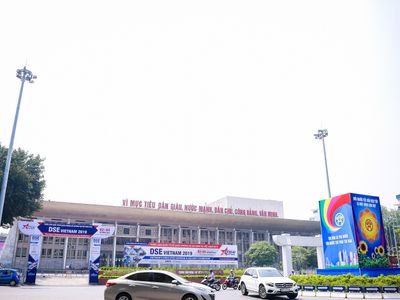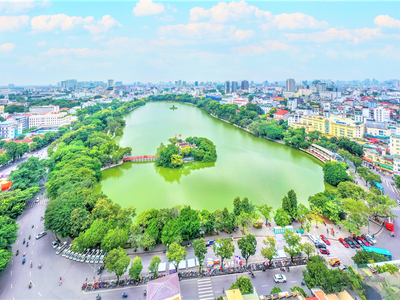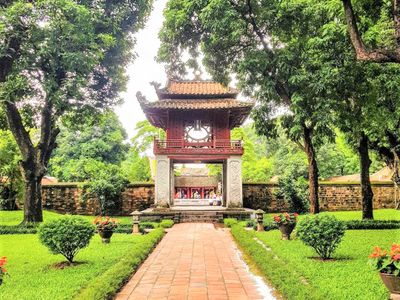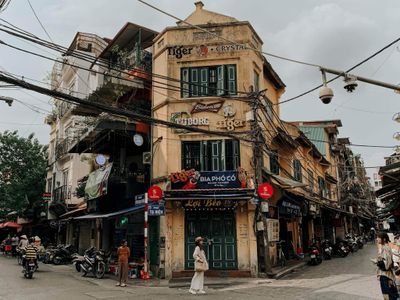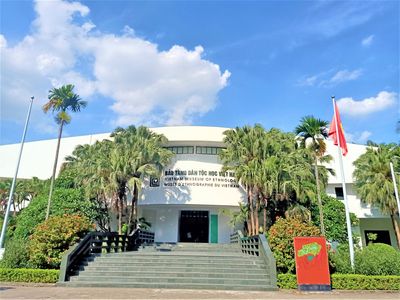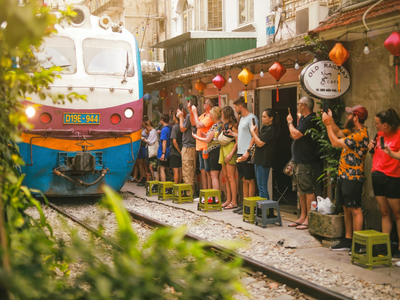Pagoda Tran Quoc, Ha Noi
Related Services
General Information
Travel Seasons
Tran Quoc Pagoda is one of the oldest and most sacred pagodas in the capital, so it is not difficult to understand why this place attracts many residents to offer incense and worship Buddha on the first and fifteenth days of the lunar month, as well as during prominent festive occasions like the New Year.
Besides, this location is also one of the spiritual tourism destinations frequently visited by international tourists whenever they come to Hanoi. You can visit the pagoda at any time of the year to experience the peaceful and tranquil atmosphere within the temple grounds. If you don't like crowds, consider visiting the pagoda on regular weekdays within the month.
Transportation Guides
Tran Quoc Pagoda is located right in the center of the capital with a large area and prominent frontage, so it will be very easy for you to find. The pagoda is located on Thanh Nien Street and right next to West Lake and Truc Bach lake. This is the area connecting all districts in Hanoi.
You can choose to start from any location and travel by any means to get to Tran Quoc Pagoda, including buses. Visitors can choose one of two main bus routes: route 33 from Yen Nghia bus station to Xuan Dinh or bus route 50 from Long Bien to the National Stadium.
Both of these bus routes will go throughout the city and have stops right near the pagoda, so it is very convenient for you to get around. In case you choose to travel by motorbike, use Google Maps to avoid getting lost or ask people for convenience.
Ticket Prices
Tran Quoc Pagoda does not charge admission tickets for both local residents and tourists. So you can freely enter to worship and sightsee. In front of the pagoda gate, there is a parking area right by the lakesight. If you arrive by motorcycle, you can park your vehicle here before entering the pagoda, and the parking fee is 5.000 VND/motorbike/turn. For cars, the parking fee ranges from 20,000 to 30,000 VND/car/turn.
Attractions
Architecture of Tran Quoc Pagoda
One of the standout features of Tran Quoc Pagoda's architecture is its embodiment of Eastern architectural aesthetics, associated with the surrounding natural landscape. Like most other pagodas throughout Vietnam, Tran Quoc Pagoda also features multiple layers of roofs, a hallmark of traditional Vietnamese pagoda design.
The pagoda currently has three main buildings, including the front hall, the incense offering house and the upper hall, connected together to form the letter Cong. On the side of the upper hall and the incense offering house are two corridors. Behind the upper hall is the bell tower. Located on the left is the stele house and on the right is the ancestral shrine.
In 1998, Tran Quoc Pagoda added a hexagonal-shaped, 11-story stupa, known as the Lotus Tower, within the temple grounds. This stupa stands 15 meters tall and has a floor area of 10.5 square meters. Each level of the stupa consists of 6 arched windows and features statues of Amitabha Buddha made from precious stones. In total, there are 66 of these statues within the stupa, and at the top, there are 9 lotus-shaped tiers, also made of precious stones.
Lotus Tower Stupa
As soon as you arrive at Thanh Nien Street, you can easily see this Stupa. Construction of the Stupa Tower began in 1998 and was completed by 2003. The Lotus Tower Stupa stands at a height of 15 meters and consists of 11 stories. The most special feature that can be mentioned in this Stupa is that inside each story there will be 6 Buddha statues crafted from precious stones.
Located on top of the temple is a 9-storey lotus tower, also known as the Nine-Line Lotus, crafted from precious stones, helping to create the sacredness and majesty of the pagoda. This is a prominent attraction that many tourists visit to explore and appreciate its significance.
The front hall
When you pass through the ancient tower garden, you will arrive at the area of the front hall. This is also the resting place for many unique statues, especially the statue of Shakyamuni Buddha in Nirvana. This particular statue has been recognized as one of the most beautiful reclining Buddha statues in Vietnam. Besides, there are also many other beautiful Buddha statues cast from bronze.
The upper hall
The upper hall at Tran Quoc Pagoda is where 14 steles are stored and, on these steles, will be engraved poems by famous doctors. Behind the upper hall is a bell tower, built into a 3-compartment wooden house, featuring a traditional and dignified red-tiled roof with traditional and ancient features.
The Bodhi tree
The Bodhi tree at Tran Quoc Pagoda is also one of the attractions that draws the attention of many tourists and Buddhist monks. The special feature of this Bodhi tree is that it is extracted from the Bodh Gaya tree itself - where Buddha Shakyamuni sat and practiced more than 25 centuries ago. Thanks to the care from the abbots here, the Bodhi tree has continued to grow lushly over the years.
Treasure trove of Buddhist memorabilia
If you have the opportunity to come to Tran Quoc Pagoda, you cannot miss the massive Buddhist treasure and rich cultural and religious history here. The pagoda currently owns many statues of Buddha and Bodhisattva made from precious stones placed in the Upper Hall. In particular, when moving inside, you will admire the exquisitely crafted statue of Shakyamuni Buddha entering Nirvana.
Tips
When visiting spiritual and sacred places such as Tran Quoc Pagoda, tourists pay special attention to clothing and behavior to be appropriate and respectful of historical and sacred places. Here are a few things you should keep in mind when visiting Tran Quoc Pagoda:
About clothes
-
Do not choose clothes with overly short lengths or have bold designs such as slit skirts, short skirts, crop tops, ... or other designs such as fishnet tights when visiting sacred places.
-
You should choose clothes with elegant colors and elegant designs, and you can choose to wear collared shirts to enhance a sense of reverence.
About behavior
-
Walking lightly, speaking softly, smiling gracefully will be the basic manners you should follow in a sanctuary. Please keep the space quiet and peaceful. Do not swear or have objectionable actions right at the pagoda or any other solemn, spiritual space.
-
You should also be conscious of protecting and preserving the surrounding landscape, do not throw trash indiscriminately, cut flowers or break branches, or smoke at the pago. These actions will destroy the landscape as well as the peaceful beauty here.
-
Another special note, if you want to visit the pagoda to enjoy the spiritual, peaceful and quiet atmosphere, you should not choose to come here on the first or fifteenth days of the lunar month but come here on different days throughout the year.
Justfly has provided you with valuable information about the spiritual and solemn site - Tran Quoc Pagoda. If you're seeking a place of serenity and tranquility in the realm of Buddhism, don't miss Tran Quoc Pagoda.
Customer Reviews
5,0 /5
5 reviews
Frequently Asked Questions
When is the best time to go to Tran Quoc Pagoda?
Tran Quoc Pagoda is one of the oldest and most sacred pagodas in the capital, so it is not difficult to understand why this place attracts many residents to offer incense and worship Buddha on the first and fifteenth days of the lunar month, as well as during prominent festive occasions like the New Year. You can visit the pagoda at any time of the year to experience the peaceful and tranquil atmosphere within the temple grounds. If you don't like crowds, consider visiting the pagoda on regular weekdays within the month.
How to get to Tran Quoc Pagoda?
You can choose to start from any location and travel by any means to get to Tran Quoc Pagoda, including buses. Visitors can choose one of two main bus routes: route 33 from Yen Nghia bus station to Xuan Dinh or bus route 50 from Long Bien to the National Stadium.
What should you wear when visiting Tran Quoc Pagoda?
- Do not choose clothes with overly short lengths or have bold designs such as slit skirts, short skirts, crop tops, ... or other designs such as fishnet tights when visiting sacred places.
- You should choose clothes with elegant colors and elegant designs, and you can choose to wear collared shirts to enhance a sense of reverence.
What are the opening times of Tran Quoc Pagoda?
Tran Quoc Pagoda is open from 8 am - 4 pm every day. Particularly on the 1st and 15th day of every month, the pagoda is open from 6 am - 6 pm and on Lunar New Year's Eve, the pagoda is open all night.
What is outstanding about Tran Quoc Pagoda?
- Architecture of Tran Quoc Pagoda: One of the standout features of Tran Quoc Pagoda's architecture is its embodiment of Eastern architectural aesthetics, associated with the surrounding natural landscape. Like most other pagodas throughout Vietnam, Tran Quoc Pagoda also features multiple layers of roofs, a hallmark of traditional Vietnamese pagoda design.
- Lotus Tower Stupa
- The front hall
- The upper hall
- The Bodhi tree
- Treasure trove of Buddhist memorabilia
